
GeoAcoustics Names Dave Holland CTO
veteran joins GeoAcoustics in a newly created position with responsibility for steering development of the highly regarded GeoSwath bathymetric sonar, GeoPulse sub-bottom profiler and Pulsar side scan sonar product ranges.After finishing his BSc(Hons) in Electronic and Electrical Engineering at Newcastle University, Holland has completed nearly four decades of work in marine survey equipment design and development, including 3D Sonar systems, shallow water sonar systems and high-resolution low voltage boomer and hydrophone seismic exploration systems, in addition to equipment database management.Starting

Frozen Methane Under the Seabed is Thawing – And It's Worse Than We Thought
previously thought.The positive outlook is that there are many natural barriers to this methane. But be warned, we expect that in some places on earth, as we warm the planet, methane from the deep will escape into our oceans.The authorRichard Davies, Pro-Vice Chancellor: Global and Sustainability, Newcastle University(Source: The Conversation
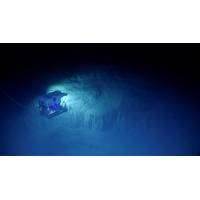
They Say We Know More About the Moon Than About the Deep Sea. They’re Wrong
about the Moon than the deep sea is at best about 70 years out of date. We know much more about the deep sea – but there is even more left to be known.The authorsPrema Arasu, Postdoctoral research fellow, The University of Western AustraliaAlan Jamieson, Senior Lecturer in Marine Ecology, Newcastle UniversityThomas Linley, Research Associate, Marine Ecology, Newcastle University(Source: The Conversation
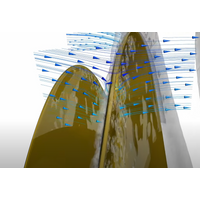
New System Reduces Underwater Radiated Noise from Ship Propellers
at Strathclyde, it was demonstrated that PressurePores can reduce cavitation volume by almost 14% and URN by up to 10dB, Oscar Propulsion said.According to the company, results were further verified in tests on the sub-cavitating propellers on Princess Royal, a 19m research catamaran operated by Newcastle University. And last year, CFD Finite Element (FE) propeller stress tests were successfully completed in accordance with classification society DNV rules.Cavitation sweet spot"We have found the optimum number of holes required to reduce the noise. So long as the right number of holes are placed

Mocean's Wave Energy Device to Power Subsea Oil & Gas Ops
commence testing at the European Marine Energy Centre in Orkney next year," McNatt said.“The Innovate UK grant will enable us to advance our engineering design, including a new power take-off, moorings, and umbilical, and will deliver additional grant support to our project partners Newcastle University’s Electrical Power Research Group and Rosyth-based electronics-specialists Supply Design. Earlier this year Mocean Energy announced a pilot project with the Oil and Gas Technology Centre (OGTC), oil major Chrysaor and subsea specialists EC-OG and Modus to study the potential to
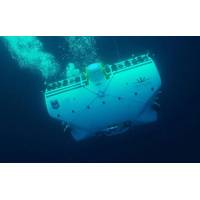
KAUST and Others Conduct Deepest Manned Red Sea Dive
from Triton Submarines, manned dives were completed to the Suakin Trough (2,777 m/9,111 ft) and the Kebrit Deep (1,470 m/4,823 ft), making Vescovo the first person to physically reach these points in the Red Sea. Accompanying him on the dive at the Kebrit Deep was Dr. Alan Jamieson from Newcastle University; with him on the dive to the Suakin Trough was Mohammed A. Aljahdli from the KAUST Coastal and Marine Resources Core Lab.Both points exhibit unique traits, as they have “brine lakes” on the seafloor that differ in character from the seawater above them. Averaging about 10 metres

Voices: Professor Cui Weicheng
figures in deep ocean science and technology, including Bathyscaph Trieste pilot #1 Dr. Don Walsh, Dr. Sylvia Earle who brings her Ocean Everest advocacy, Russia’s MIR Program Director Dr. Anatoly Sagalevich, DEEPSEA CHALLENGER co-designer and explorer James Cameron, WHOI’s Andy Bowen, Newcastle University’s Dr. Alan Jamison, Scripps Institution’s Dr. Douglas Bartlett, and other distinguished scientists and engineers.In addition to starting the HAST program at Shanghai Ocean University, Cui is advising a start-up group founding Westlake University, the first private university in
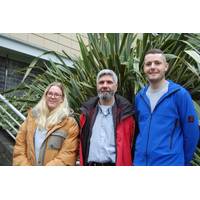
Researchers Set out to Study the Southern Ocean
A team from Newcastle University has arrived in Antarctica this week as part of a major new research project to measure the rate of uptake of heat and CO2 in the Southern Ocean. Dr. Miguel Morales Maqueda, Alicia Mountford and Liam Rogerson from Newcastle University have joined the ORCHESTRA research project (Ocean Regulation of Climate by Heat and Carbon Sequestration and Transports) to carry out sea surface measurements using a Wave Glider. Fitted with a GBS antennae – a highly accurate GPS system – the glider will survey the ocean surface, measuring properties such as
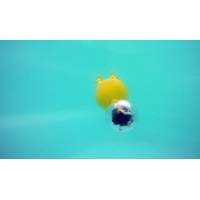
Machines Infused with AI that Fly, Swarm and Dive
enough from most published SONAR mapping applications to require the team to innovate to achieve success. Team Tao Unleashes the Fire Ants Team Lead: Dale Wakeham Team Tao brings together industry experts from UK subsea engineering specialist Soil Machine Dynamics Ltd. (SMD) and Newcastle University who together are developing an autonomous swarm system for rapid surface to deep ocean exploration. Beyond this small core team, there is an extended team of six technical consultants, a group of student engineers and a panel of six academic and industry advisors. Their approach to the Shell


 February 2024
February 2024





